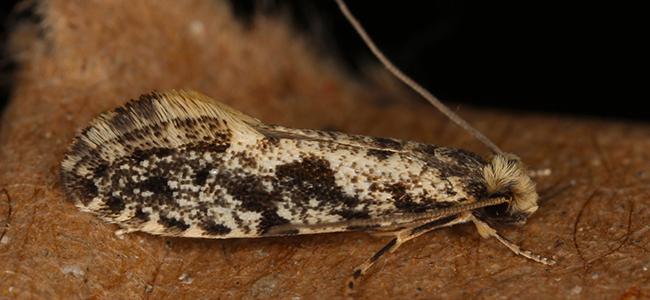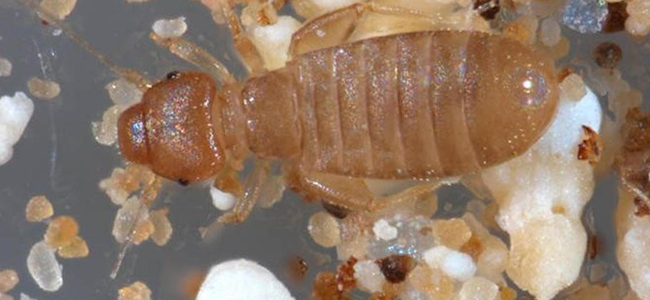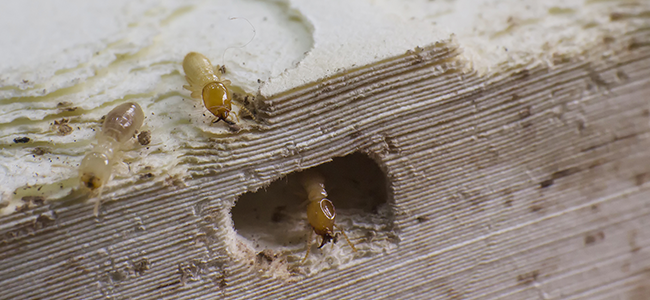
Are Pantry Moths In Connecticut Dangerous?
12/23/2021
Pantry pests invade Connecticut homes and get into stored food items. Find out how to prevent these disgusting pests in this guide....
READ MORE >
02/09/2017

Have you started noticing small brown bugs lining your bookshelf or within the pages of your books? Booklice could be the culprits.
These tiny white bugs have caused a lot of confusion and panic in homeowners over the years. The panic ensues as you open an old book on your shelf and think that dust is moving everywhere—until you realize that it’s crawling and isn’t dust at all. These occasional invaders are probably the Psocids commonly referred to as booklice.
However, to the surprise of many of our clients, they are nothing like lice and are rarely only found in books.
Booklice are a species of psocids, meaning that they primarily feed on fungi or mold within the environment. While they are named booklice because of their superficial resemblance to lice species found in hair, they are not considered true lice.
Booklice are opportunistic household-dwelling insects that seek damp and warm areas inside your home that aren’t likely to be disturbed—like an old bookshelf in the basement, or molded foods in the pantry. This is because booklice feed on a variety of things like mold, fungi, starches, and dead insects. Some Psocid species even feed on the glue that binds books and wallpaper.
Booklice are most commonly found in the colder months of the year, as they are forced to come inside from the cold to avoid dying. From there, they will quickly become an adult within a few months, usually as warmer weather arrives - creating areas of high heat and moisture in the process.
While they most commonly feed on or around books, this isn’t the only place they can be found. They can also commonly be found in and around furniture, stored foods, rugs, paper products, cardboard boxes, home voids, and practically any area of high humidity within the home.
The struggle for our clients is that in our region most Psocids are no more than 1-6 millimeters in size. Therefore, without a magnifying lens, they are nearly impossible to properly identify. Along with their small size, to the untrained eye, these bugs could even be confused with bed bug nymphs. However, to an entomologist, it is easy to spot the difference between booklice and bed bugs. Psocids have a more elongated body with three defined segments, a pronounced head, and long “threadlike” antennae. Bed bug nymphs have a less elongated body, elbowed antennae, and do not appear to have a neck.

If you find booklice don’t panic—they are common in old and new homes alike and they don’t feed on humans or pose any real threat. Simply call us at American Pest to inspect your home and help you identify problem spots that may attract these occasional home invaders. If you have any questions feel free to reach out to us. You can even submit a picture of what you think may be a Psocid here!
Learn More About How To Get Rid Of Booklice

12/23/2021
Pantry pests invade Connecticut homes and get into stored food items. Find out how to prevent these disgusting pests in this guide....
READ MORE >

10/20/2021
What's yellow and white and orange all over? None other than these sneaky insects with a penchant for wooden objects! ...
READ MORE >

10/01/2021
Fulton, MD, September 30, 2021—American Pest, the leading provider in modern, preventive pest management throughout Maryland, Washington D.C....
READ MORE >

09/03/2021
Healthcare facilities, such as hospitals, nursing homes, rehabilitation centers, and emergent care centers must maintain a strict level of sani...
READ MORE >

Protect your home and family from nuisance and potentially damaging pests with a Preferred Care home pest control plan. Starting at $49/month

Don't let the bed bugs bite a second longer. Contact American Pest for the most comprehensive bed bug control in the industry. Learn More

Our certified rodent control pros will put an end to your frustration by getting rid of rats and mice inside your home. Learn More

Say goodbye to wood-destroying termites in your home when you contact American Pest for expert termite control. Learn More

Trust American Pest to deliver professional backyard tick control services that are guaranteed to get results. Learn More

Don't spend the warm-weather season indoors, find out how American Pest's professional treatments get rid of mosquitoes. Learn More
Fill out the form and recieve feedback in less than 5 minutes. For immediate service please call.